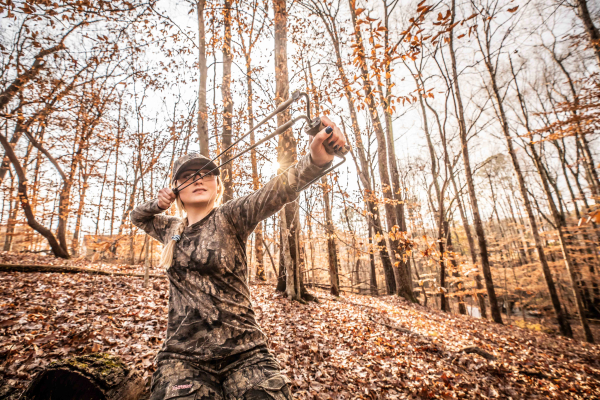Open Areas Important for Turkeys
By Steven W. Barnett, Certified Wildlife Biologist, Division of Wildlife and Freshwater Fisheries
Turkey hunters often ponder and are amazed at where they find gobbler signs, especially in the spring. Some of the best areas for finding gobblers often do not appear to be good habitats for turkeys. Appearances may be deceiving, however. Many times, hunters report hearing several gobblers gobbling in the areas of clearcuts, young pine plantations, fields, pastures, utility rights-of-way, wide roads and other openings. So, what is it about open areas that attract gobblers?
The answer is found in the life cycle of wild turkeys and is driven primarily by the instinct of procreation. After dispersal of winter flocks, hens seek more open habitats for nesting. This is a seasonal shift from woodland habitats where foraging for fall foods such as acorns was more prevalent in movement patterns. Wild turkeys will use openings periodically year round but open areas become a focus of use in the spring.
Gobblers respond in the spring by moving into more open habitats as well to seek out hens for mating. So for turkey hunters, the focus of scouting efforts and listening for gobbling ought to be near open habitats adjacent to roosting habitat along rivers, creeks and branches. Gobblers often use openings for courtship and display behavior (gobble, strut and drum) in an effort to attract hens. Openings may be referred to as “staging areas” for gobblers as they are “trolling” for receptive hens throughout their springtime home range. Also, it is important to remember that each adult gobbler began life as a two-ounce poult whose survival depended on grassy openings for feeding on insects and for providing protective cover during the brood-rearing season.
To put it in a nutshell, wild turkey survival and population growth is centered on the availability and quality of openings from spring hatch to fall flocks. Landowners and hunting clubs need to create, maintain and enhance openings throughout their property in order to provide optimum wild turkey habitat. The most important aspect of a wildlife opening is that it is maintained as an opening. This does not necessarily mean planted in crops.
A wise use of limited funds should focus on correcting soil pH and periodically fertilizing, mowing, burning and disking openings to encourage native grasses such as little bluestem, big bluestem, and Indian grass, to name a few. If you do plant crops, alternate these plantings with native plants and keep it simple with turkey-specific crops such as chufa and millets in the warm season and clovers in the cool season.
The take-home message for the landowner that turkey hunts is this: If your property consists of primarily unbroken and unmanaged woodlands with few openings and your neighbor has a balanced mix of managed forest and openings, then most of the gobbling you will hear will be across the property line.
For more information, contact Steven W. Barnett, Certified Wildlife Biologist, Alabama Division of Wildlife and Freshwater Fisheries, 30571 Five Rivers Boulevard, Spanish Fort, AL 36527; phone 251-626-5474.






